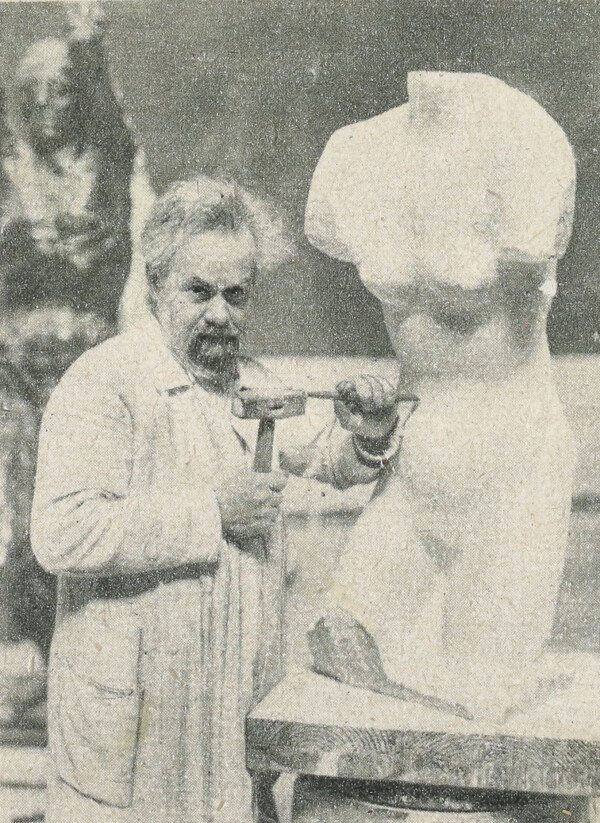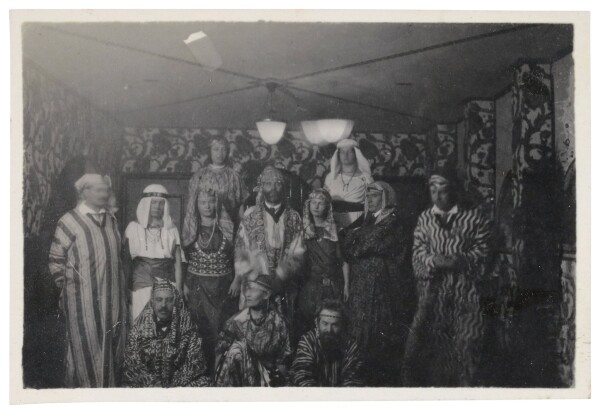Anton Hanak

Anton Hanak, Klimt Foundation, Vienna
© Klimt Foundation, Vienna

Gustav Klimt at a costume party in the cellar of the Primavesi family's country house in Winkelsdorf, presumably 12/30/1917-01/03/1918, Klimt Foundation
© Klimt Foundation, Vienna
Anton Hanak was a member of the Vienna Secession and the Wiener Werkstätte as well as a founding member of the Austrian Werkbund. Hanak had close professional and private ties to Gustav Klimt, Josef Hoffmann and the Primavesis. He is today considered one of the most important Austrian sculptors of the 20th century.
Anton Hanak was born in Brünn (now Brno, Czech Republic) in 1875 and grew up there. He came to Vienna in 1889 to train as a wood carver and subsequently traveled as a journeyman for several years. He returned to Vienna in 1890 and studied at the Academy of Fine Arts until 1904, where he was for instance taught by Edmund von Hellmer and Hans Bitterlich.
The Primavesis as Patrons
Soon after his graduation, Hanak – who was now working as an independent sculptor – received his first commission from the Primavesis, a family of industrialists from Olmütz (now Olomouc, Czech Republic), who would act as important patrons not only for Hanak but also for Gustav Klimt and Josef Hoffmann in the decades to come. Anton Hanak and Josef Hoffmann were commissioned by the Primavesis to decorate their cottage in Winkelsdorf (now Kouty nad Desnou, Czech Republic) as well as Robert Primavesi’s villa in Vienna. There is photographic evidence of Hanak’s close ties to the family: photographs taken at a costume party at the Primavesis’ cottage in 1916 show members of the family of industrialists and the fellow artists Anton Hanak, Josef Hoffmann and Gustav Klimt celebrating together.
Secession, Exhibitions and “Red Vienna”
After having first presented his works at the Hagenbund in 1902, Hanak also exhibited his sculptures at the Vienna Secession in 1905. He joined the association one year later – when Klimt was no longer a member – but left it again after four years. In the 1910s, he again collaborated with Josef Hoffmann and Gustav Klimt for the “Esposizione Internationale di Roma” [“International Art Exhibition of Rome”] in 1911 and the “Große Kunstausstellung Dresden” [“Great Dresden Art Exhibition”] in 1912.
Hanak, who taught at the Vienna School of Arts and Crafts from 1913, saw his greatest professional success in the Interwar Years – with “Red Vienna,” the Social Democratic government of the city of Vienna, acting as his most important client. He created many carved and molded sculptures as well as symbolic monuments during this time, including the War Memorial at Vienna’s Central Cemetery and the Magna Mater Fountain for the children’s home founded by the politician Julius Tandler.
Afterlife
The sculptor died in Vienna in 1934. He was buried at the cemetery in Vienna-Hietzing (13th District), not far from Gustav Klimt’s final resting place. Hanak’s artistic legacy is today preserved at the museum in Langenzersdorf in Lower Austria, where he had lived for several years.
Literature and sources
- Felix Czeike (Hg.): Historisches Lexikon Wien, Band 3, Vienna 1994, S. 40-41.
- Österreichische Akademie der Wissenschaften (Hg.): Österreichisches Biographisches Lexikon 1815–1950, Band 2, Vienna 1994.
- Claudia Klein-Primavesi: Die Familie Primavesi und die Künstler Hanak, Hoffmann, Klimt. 100 Jahre Wiener Werkstätte, Vienna 2004.
- Neues Wiener Journal, 26.09.1921, S. 3.
- Neues Wiener Journal, 11.01.1934, S. 8.
- Max Eisler: Anton Hanak, Vienna 1921.
- Wiener Kurier, 08.03.1949, S. 4.
- Wiener Zeitung, 01.07.1949, S. 4.
- Das interessante Blatt, 05.11.1925, S. 4.
- N. N.: Der große Plastiker Österreichs. Zum Tode Anton Hanaks, in: Österreichische Kunst, 5. Jg., Heft 1 (1934), S. 3-7.

